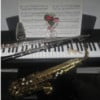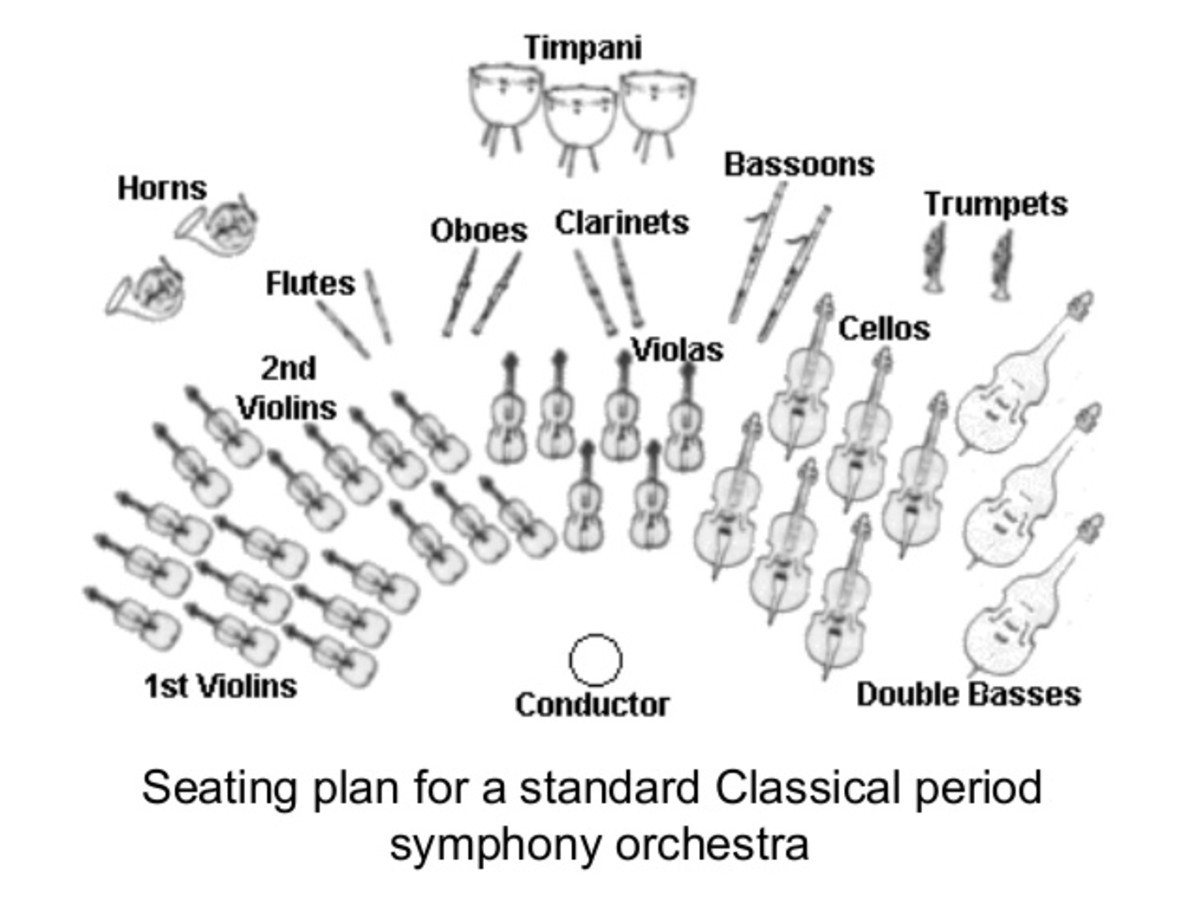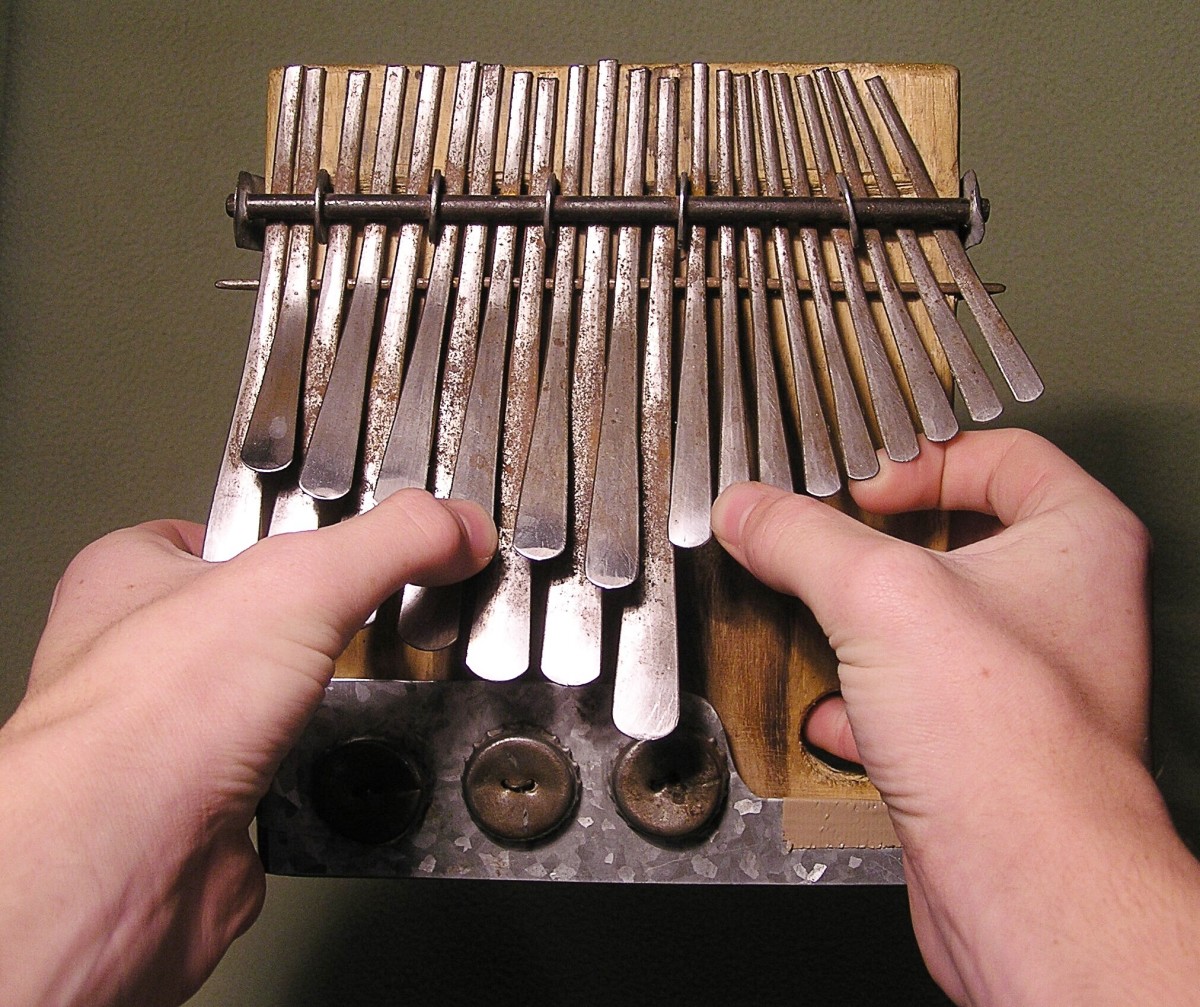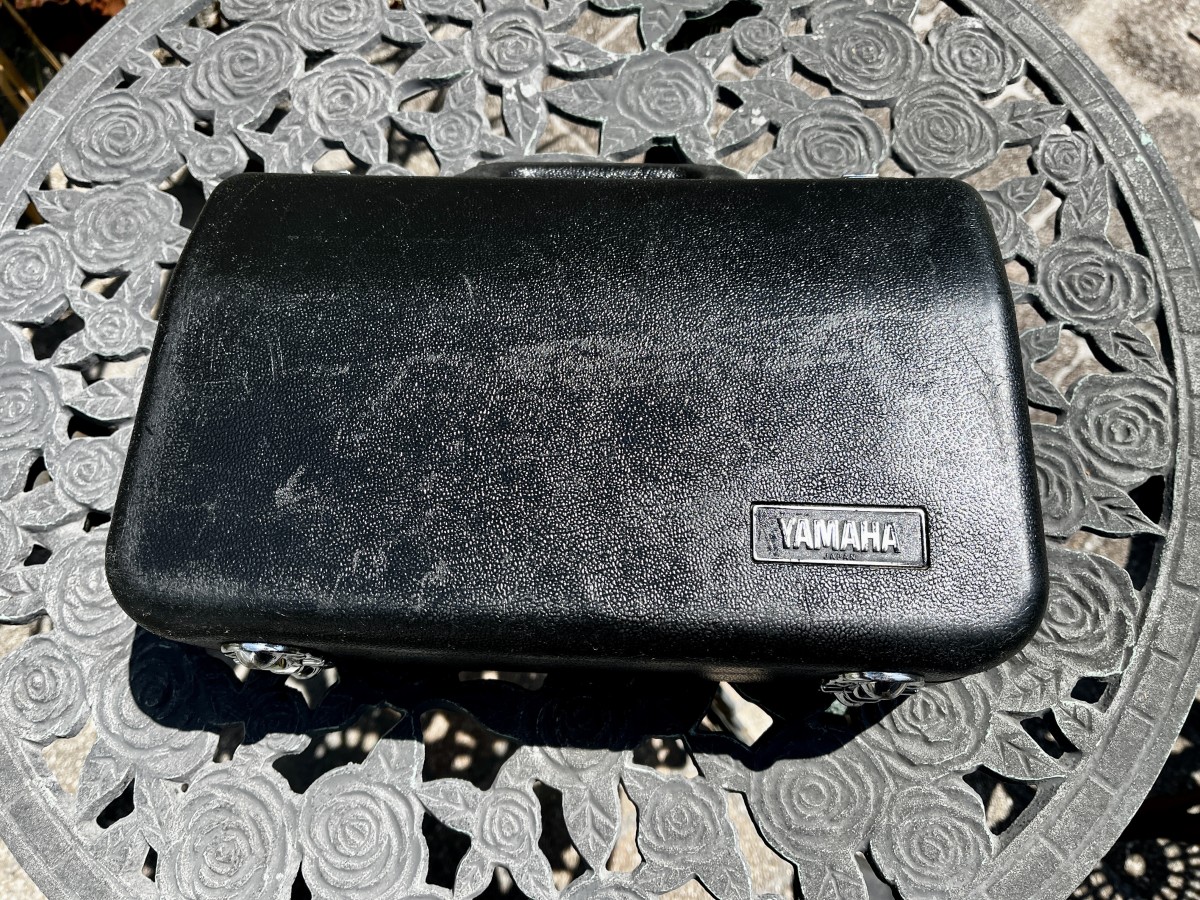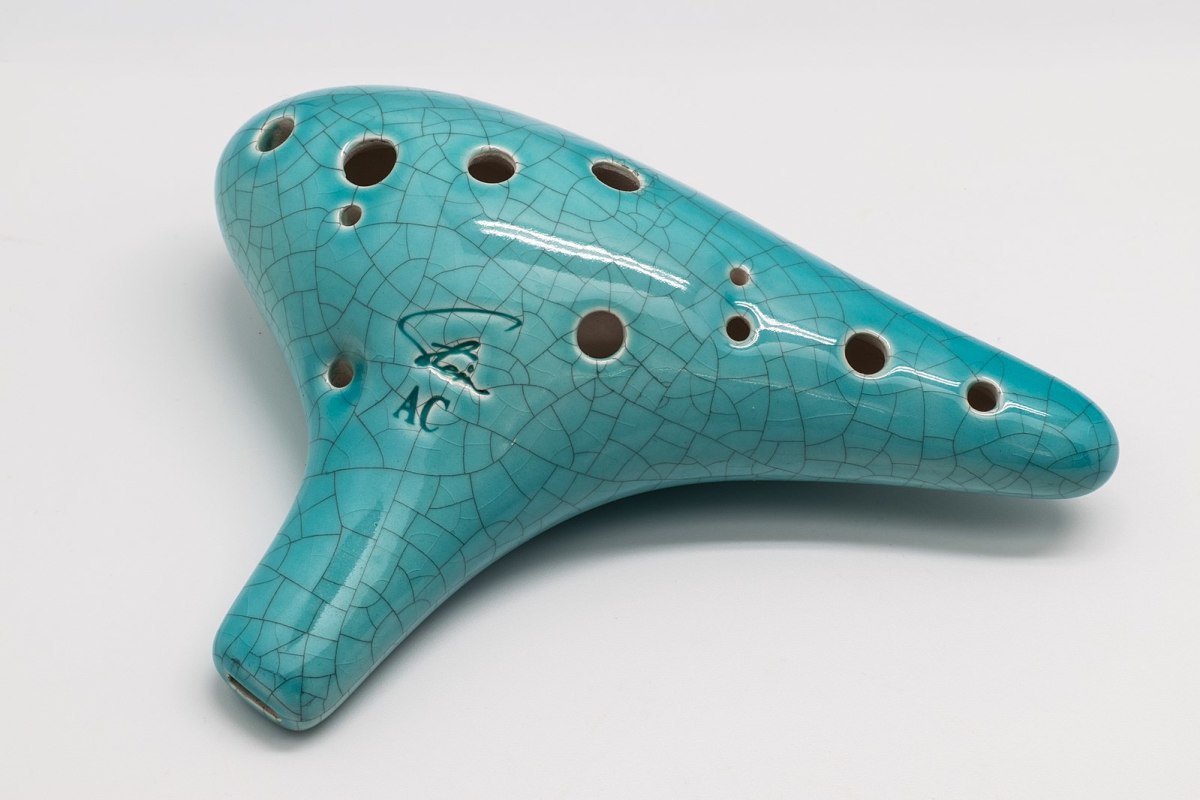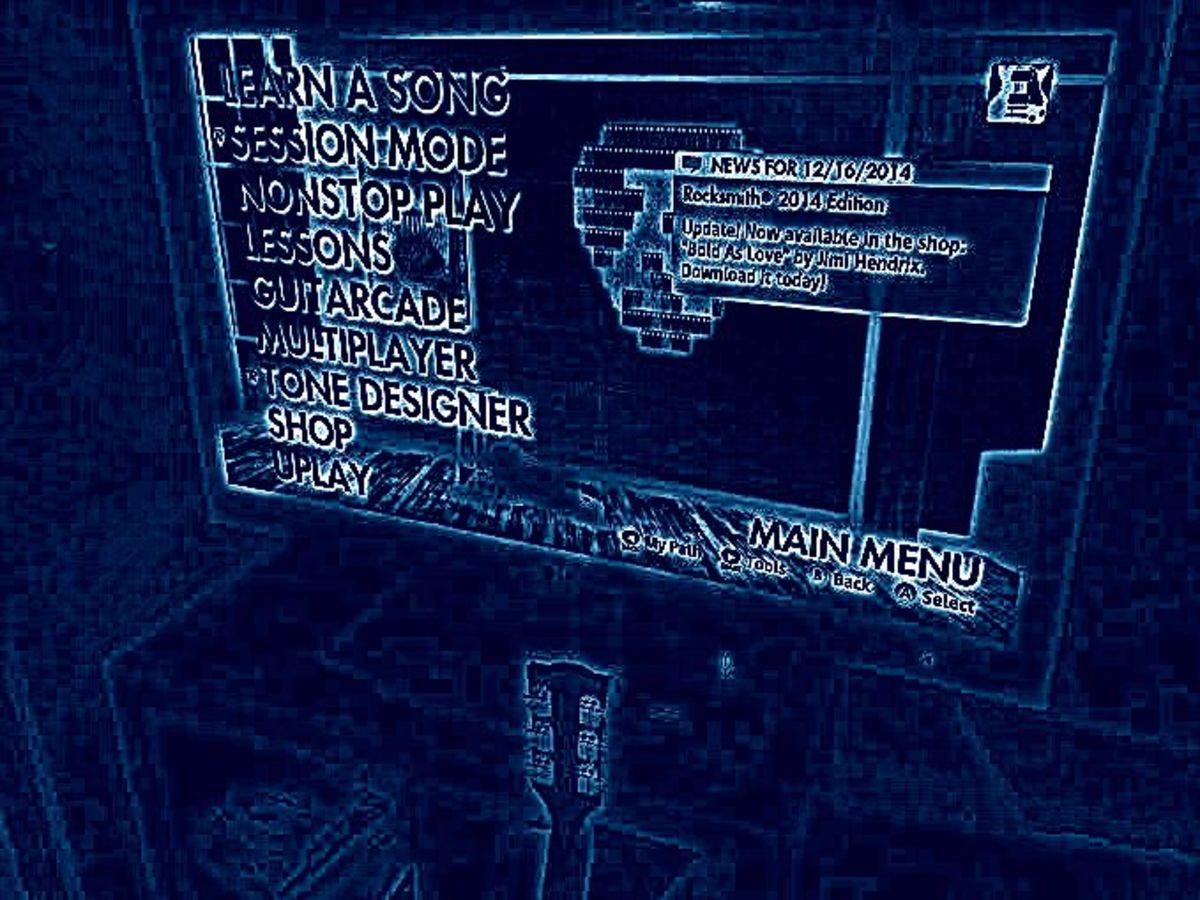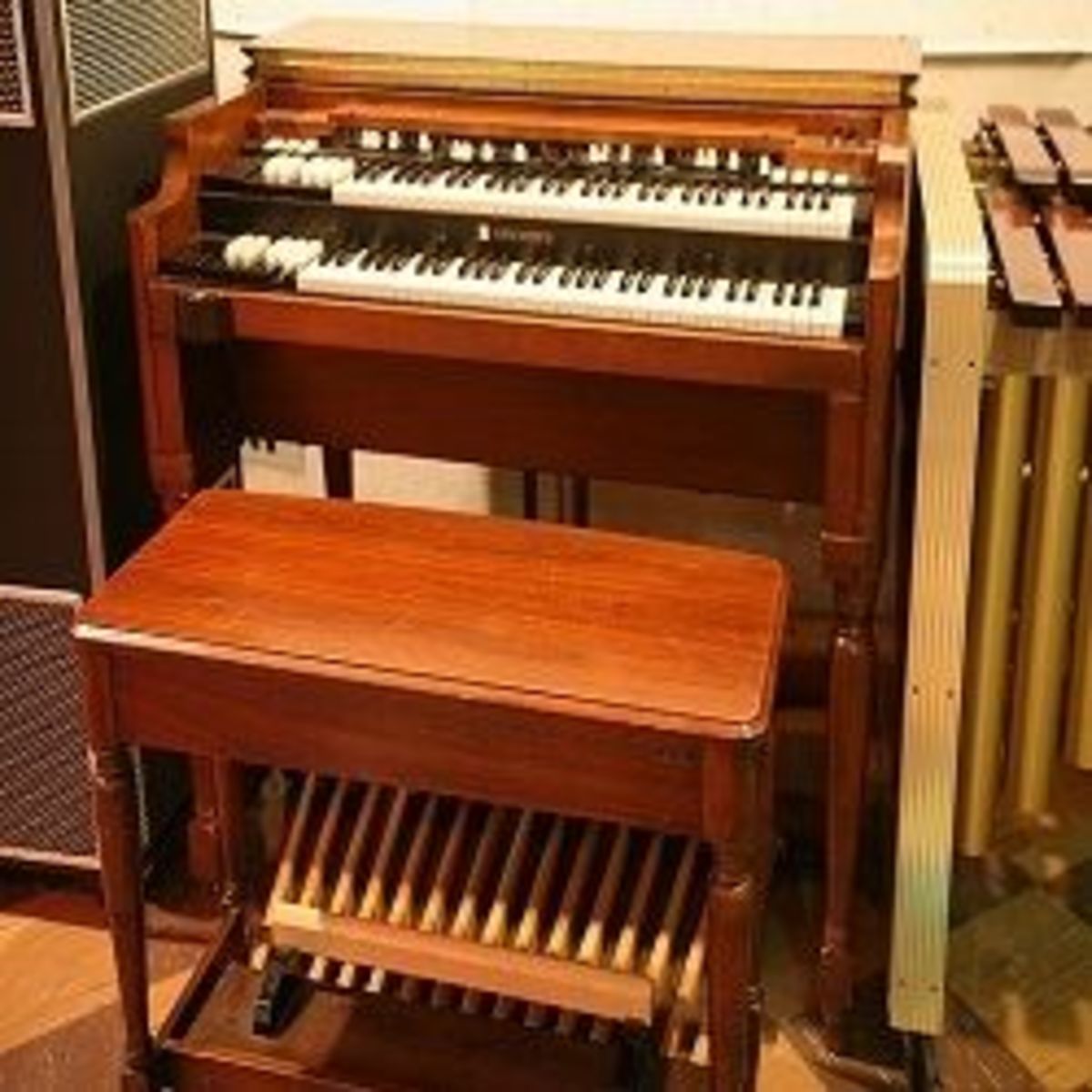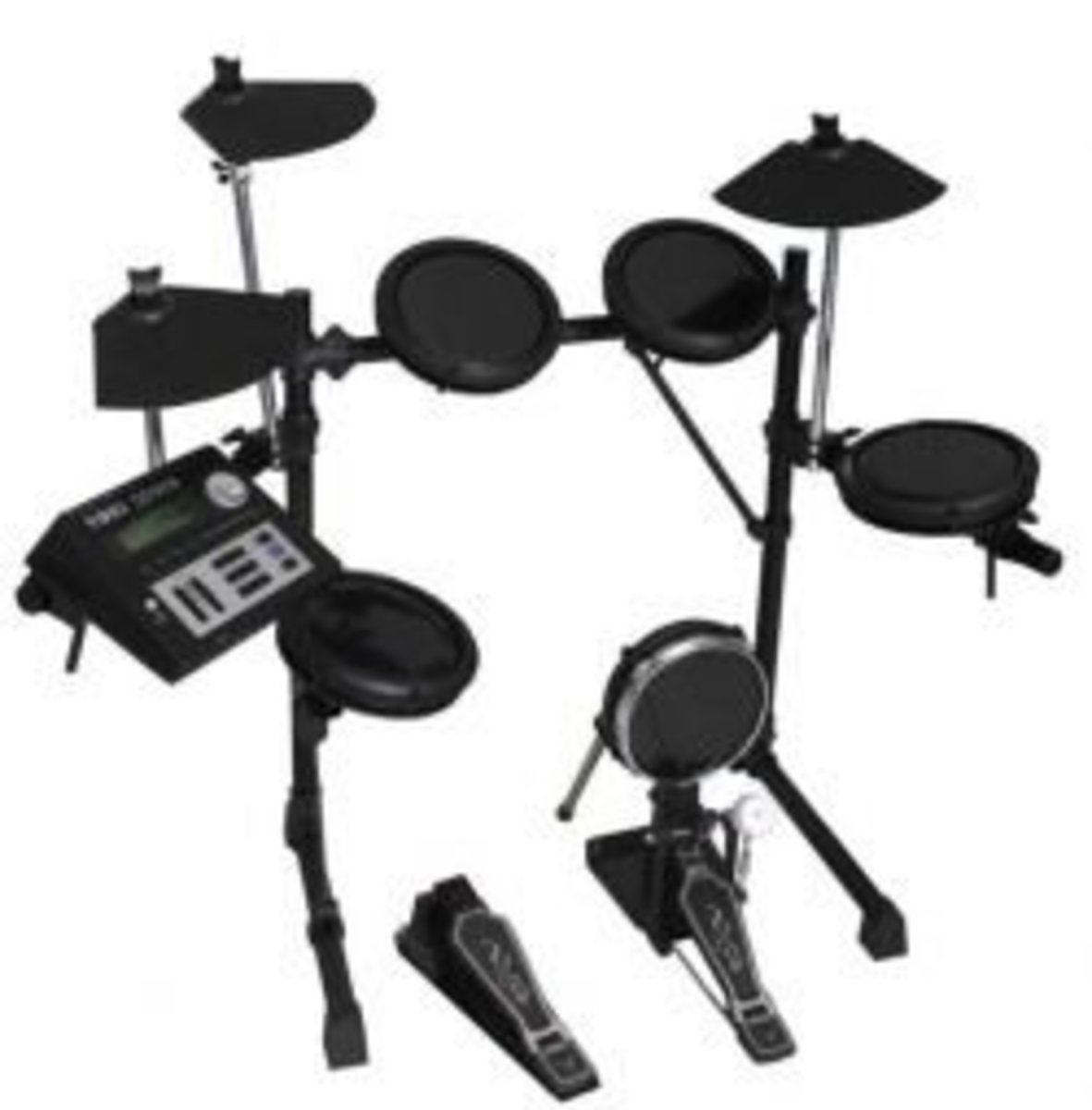Orchestra: Brass Family Lapbook Unit
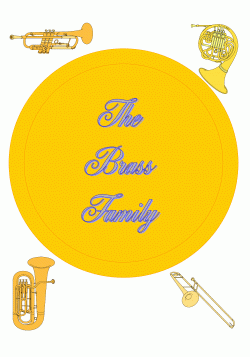
Lesson Plan on Brass Instruments
Imagine ... a breezy, beautiful day below the big blue sky ... a brass band begins to step to the bold beat of the bass drum. The sun brightly bounces off the bells of the beaming brass instruments ... then you hear it, the boisterous, blowing of the buzzing brass ... what a breathtaking blast!
If you have enjoyed listening to any of the wonderful brass instruments and want to find out more about them, I've collected some resources for you to surf.
Learn about the brass family of instruments in this study unit. Pieces for a Brass Instrument Lapbook or Notebook are included if you like, or just use the materials, links, and games to start your learning.
The Brass Family Lapbook - Free minibooks, notebook pages, and worksheets!
The following lapbook or notebook pieces may be found at my music blog, Joyful Songs. Under each heading is a link to this same page labeled "Lapbook". You may download all at once, or just a section or two. A wide range of ages and abilities may use these - some are easy, some are hard. Pick what is right for your students. Activities and links may be used as a unit without the lapbook pieces if you prefer.
The Brass Family Cover, Brass Vocabulary, Brass in the Bible, History of Brass Instruments Notebook Page & Mini, Brass Notebook Page, Characteristics of Brass Notebook and Layer Book, Instrument Mini Books: Trumpet ~ Bugle ~ Cornet ~ Flugelhorn ~ French Horn ~ Mellophone ~ Trombone ~ Baritone ~ Tuba ~ Euphonium ~ Sousaphone, Valve vs. Slide, Valves & Pitch, Brass Mouthpieces, Embouchure, The Bell, Mutes, Conical Bore versus Cylindrical Bore, Saxophone? Is it a brass instrument? Why or why not?, Science & Math Notebook, Metallic Elements, Buzzing Brass Mouthpiece, Experience Vibrations, How Hearing Works, Brass Measurement, Styles of Music, Brass Instruments Over Time, Brass Games, Brass Instrument Cards, Resources: Books and Websites Mini Books
- Joyful Songs ~ Brass Family Free Lapbook
The lapbook pieces at my blog. Take a look around while your there. I enjoy creating new materials for my students! Let me know if you have a suggestion. I'd love to hear from you!
Extreme Brass Playing! - DCI Highlights
Reading List
Lapbook: Reading List
Characteristics:
· Brass instruments are made of bamboo ... No way! The instruments are mostly brass, of course, but may have other types of metal, also, like silver, gold, or other materials ... Can you imagine, the bamboo family of instruments ...actually, bamboo would be great for woodwinds.
· They have the power to be the loudest instruments in a band or orchestra.
· All the brass instruments are long metal tubes of different sizes and widths that have been coiled up to make them easier to handle ... unless you find it easy to hold up a 17 foot metal tube while blowing. I think it would be rather hard to read one's notes from a music stand. Not to mention the difficulties that would occur in a marching band!
· Brass instruments are wind instrument because they are blown into, but they are not woodwinds.
· All brass instruments have a cup or funnel shaped type of mouthpiece to blow into. They are similar except in size and variation of shape.
· Players 'buzz' their lips to cause vibration and produce a sound. More air and tighter buzzing create higher pitches. Less air and looser buzzing create lower pitches.
· Many brass instruments use valves or buttons to change where the air is flowing. This change makes the air go through longer and shorter tubing and make different tones.
· Some, like the trombone, use a slide to change pitches.
· There is a round bell at the end to help sound production.
· A mute may be used to alter the sound of the instrument.
· There are variations of each of the instruments usually in size. Generally the bigger the instrument, the lower they sound whereas the smaller the instrument, the higher they sound. The instruments may be labeled soprano or piccolo, alto, tenor, or bass to fit their range.
By the way, although saxophone looks like a brass instrument, it is not due to the type of mouthpiece it has. It requires a wooden reed to play instead of a buzz blow. It also has many finger keys instead of 3 -4 valves.
- Lapbook
Brass Characteristics Notebook Page and / or Mini Book - What are Brass Instruments?" Brass Instruments in Action
Clear, easy descriptions of brass instrument characteristics - great pictures and sound videos. I like the picture of the labeled trumpet parts. - Brass Family Section
San Francisco Symphony ~ Elementary Ages ~ I've had trouble getting on this one sometimes, but click around to get to the brass page. Elementary ~ Click instrument to find out more and to hear examples. - Brass Section
Arts Alive ~ Elementary Ages ~ simple explanations, pictures, and sound clips. - Brass Family
Elementary & Middle School Ages ~ History & Description of all instruments as a family and separate instruments (click on left). - Brass Family
Short and sweet definitions and history of the family's instruments. - Meet the Orchestra
Elementary & Middle School ~ Info and history on the trumpet, French horn, trombone, and tuba. Really fun site! The games are cute and educational too! - The Orchestra - A User's Manuel
This is the brass page, but if you click a particular instrument under orchestration, it leads you to mini lesson videos and resources for players. Click on historical to learn about the style periods. - Brass Instruments
Games - Brass Family of the Orchestra
Dallas Symphony Orchestra Kids Section - The Brass Family
Oregon Symphony - Virtual Orchestra
Large clear pictures and sound clips
Okay, I realize most of you are not going to run out and start playing one of these instruments. But when I saw these videos, I thought they might be helpful to learn about brass instruments. Check them out to see the insides of the instruments, learn about how musicians breathe and 'buzz', and the basic of brass.
The History of Brass Instruments
· Horn instruments stem from all over the world. They can be found in most ancient cultures and were made from a variety of materials such as: animal horns, wood, metal, conch shells and others.
· The first ancestors of our modern horns were animal horns. The pointed end was cut off to blow into.
· The first recorded horn instrument was the Hebrew Schofar made of ram's horn.
· Egyptians used short, straight silver trumpets during wars.
· A bronze trumpet and a silver trumpet were found in the Egyptian tomb of Tutankhamen.
· Pictures on Greek and Roman artifacts show both straight and curved types of horns.
· A salpinx was a long straight trumpet played by the Greeks at their Olympics games.
· The lituus was a straight Roman trumpet.
· A buccina was used in the Roman military.
· Pieces of ancient wood and metal horns have been found in Northwestern Europe.
· A karna is a silver trumpet from India that can be as long as four feet.
· In the Swiss Alps, alphorns were first used to carry messages across mountains to their neighbors.
· A clarion was a medieval trumpet with a short curved tube.
· Horns were used for hunting, signaling, and battling wars.
· In the 1600's, holes and keys started to emerge.
· Some of the first valve brass instruments were created in the early 1800's in Germany allowing the players a broader range of note possibilities.
- Lapbook
History of Brass Instruments Notebook Page & Mini Book - The History of Brass Instruments
Article about the history and style periods of music. - Instrument Storage Room
New York Philharmonic · Walk the person to the brass section and click on the word 'brass' or an instrument. · See also the resources listed under "Brass Instrument Information" for more history.
Do you play an instrument?
Read about some brass legends!
Come meet the family members!
· The English name trumpet comes from the French word, "trompe", which means an elephant trunk. It must have looked or sounded like one. Ever heard of the "elephant's trumpet" meaning the sound it makes? It reminds me of the Disney movie, Tarzan, when the gorillas and elephant were trashing the camp.
· It usually has 3 valves.
· The trumpet has about a 3 ½ octave range.
· Most of them are pitched in "Bb", meaning that when a trumpet plays a "C", it matches the concert pitch (piano, for instance) "Bb".
· Trumpets may also be pitched in C, D, or others.
· The tubing would be about 6 ½ feet if you stretched it out.
· The trumpet is the highest of the brass instruments (especially the piccolo trumpet).
· Bright, clear tones may be made on the trumpet.
· Two to four trumpets are used in an orchestra depending on the piece.
· Players read notes from the treble clef.
· A slide trumpet was used to change pitches from about 1400 - 1800 at which time valves were invented.
Bugle:
· Players read notes from the treble clef.
· It is similar to a trumpet with no valves for changing pitch.
· Pitch changes must be done with the player's air and embouchure. (How's that for a new word? Embouchure, from the French word, "bouch", means "mouth". So, for a musician, the embouchure has to do with the placement of the mouth on the mouthpiece.)
Cornet:
· Players read notes from the treble clef.
· The cornet is a little smaller and higher than a trumpet.
· It has a smoother sound and is less brilliant.
· The cornet is used for military and brass bands mostly.
Flugelhorn:
· It is slightly larger than a trumpet.
· It tends to have a more mellow sound to it.
· Described as a valved bugle with 3 or 4 valves.
· They use short, wide mouthpieces.
· They range in size and pitch from bass to soprano
French Horn:
· The French horn originated in France.
· A predecessor of this instrument came from a hunting horn that was roundly curved.
· Uncoiled it can be up to 17 feet long! (I researched this on several sites and found a variety of answers on this one, anywhere from 7 to 17.)
· It uses piston and rotary valves.
· There are 3 regular valves, and a 'thumb' valve to change the horn from "F" to "Bb" pitched on a double horn.
· Most single French horns are pitched in "F". When the horn plays a "C", it will sound concert pitch "F".
· Horn players hold their right hand in the horn's bell to change the sound. This is called "stopping".
· Most orchestras have about 4 French horn players.
· The left hand fingers press the valves, and the right hand is held in the bell.
· Players read notes from the treble clef.
· French horns have a very flowing, gentler sound than many other brass instruments.
Mellophone:
· A mellophone is a middle range brass instrument used in place of a French horn in a marching band or drum and bugle corps.
· Fingerings are the same as the trumpet.
· There are 3 valves.
Trombone:
· Trombones were created from a variation of trumpets.
· Because it was similar to a large trumpet, Italians named it the trombone meaning "big trumpet".
· About the same as the Italian trombone was made, an English inventor created a similar instrument in the 1500's called the "sackbut". (I'm not making that up … really!) "The word sackbut may possibly come from the French word 'sacquer', which means 'to draw out'." from Making Music Fun Website.
· Most trombones have slides in order to play chromatic notes.
· Some trombones have valves.
· Tubing is about 9 feet long.
· One tube is placed inside another for the slide.
· The length of the instrument can be controlled to change pitches.
· Three tenor trombones and a bass trombone in an orchestra are average.
· The trombone is held with the left hand and shoulder.
· The right hand moves the slide out and in.
· There are seven positions the trombonist uses to create all of their pitches.
· Players read notes from the bass clef.
· Beethoven was the first to compose orchestral music for the trombone in his Symphony #5. You know - Da Da Da Daaaaaaaa, Da Da Da Daaaaaaa. If you can't recall it, google it. I know that you have heard the piece.
* Read a fantastic article to learn more about this cool instrument!
History of the Trombone in Brief
Baritone:
· The baritone is sort of like a small tuba.
· Players read notes from the bass clef.
· It is pitched in Bb one octave below the trumpet.
· The baritone has a narrow bore.
Tuba:
· The tuba is the lowest of the brass family.
· It is also the largest member.
· The bell is huge!
· The average tube has 16 feet of tubing, but may have more or less to change the pitch.
· It can be pitched several ways depending on its size ~ the bigger the instrument, the lower the sound.
· Only one tuba is need in an orchestra.
· It's low, beautiful sounds build the groundwork of the whole orchestra.
· The tuba usually plays harmony. (In the story of "Tubby the Tuba", Tubby is tired of playing harmony and wants to try melody for a while. Fun story for kids.)
· It has 3 - 5 valves.
· Players read notes from the bass clef.
Euphonium:
· The euphonium is essentially a member of the tuba family.
· Players read notes from the bass clef.
· The euphonium has a wider bore.
· The baritone and euphonium are very similar except for the size and tone.
Sousaphone:
· Players read notes from the bass clef.
· Invented by John Philip Sousa and J.W. Pepper Music.
· More mellow sound than tuba.
· The bell can face up for a concert band, and turned forward for a marching band giving both types of bands the preferred sound.
· The sousaphone is played like the tuba.
· This interesting instrument wraps around the musician's body to make it easier to carry than a tuba.
· It may be made of brass or silver, but it is usually made of a lighter weight, white, fiberglass type material.
Trumpet Photo Credits to "Jerzebabi23" on Photobucket.
French Horn Photo Credits to "cornflower61" at Photobucket.
Trombone Photo Credits to "taquito99" on Photobucket.
Sousaphone Photo Credits to "backbeat" on Photobucket.
- Free Brass Family Lapbook Materials
Instrument Mini Books - Fill in with information about the instrument: How does it sound? What does it looks like? What is it made of? How is it made? How is it played? What is the history of the instrument? Where and when was it first played? Who is - Brass Instrument Article
Instrument Info - Transposing Instruments
This will be helpful to explain why instruments are called a "Bb instrument", or an "Eb instrument", etcetera. - French Horn Lens
Check out this wonderful lens to learn more about the French Horn! - Trombone Trivia
Another cool lens on Squidoo
Brass Ensembles for your collection!
Music Appreciation - A great way for children (or anyone) to learn about all kinds of instrumental music and to appreciate it is by listening to it several times. Listen to the melody carefully, another time listen to the harmony, listen to the rhythms, listen to the dynamics, listen to the pitches, and listen to the instruments and how they interact with each other. Get to know a piece inside and out to really appreciate its artistry! :D We like to listen to all types of musical recordings in our home, in the car, on picnics, or wherever we happen to be!
Learn More by Hearing - Solo & Ensemble Brass Videos
Wynton Marsallis (Mozartin & The Carnival of Venice) ~ Maynard Ferguson (Trumpet Voluntary) ~ Canadian Brass (Bach) ~ CB (Toccata & Fugue) ~ Tiger Rag for Tuba ~ Brass Band Sousa (I just have to pick one unusual video per module!)
Parts of a Brass Instrument
Lapbook Link below:
· Valve vs. Slide: What is the difference?
· Valves & Pitch ~ Trumpet Physics (Hyperphysics Link) Scroll down a little to answer, How does pushing a valve change the pitch of the instrument?
· Brass Mouthpieces (Free Dictionary Link) Picture & diagram of brass mouthpiece; embouchure; mouthpieces of the family (size & shape)
· The Mouthpiece (Hyperphysics Link) Yes, some of this is rather deep. This is great for my high school student, but, my early elementary student will just discuss size and shape to write in his book. Just pick the amount you feel is good for your student.
· Embouchure - meaning?
· Metallic Elements: Chemistry ~ What materials are brass instruments made with? (Mostly a copper - zinc mixture.)
· The Bell of the Horn (Hyperphysics Link)
· Mutes - function, types, sizes, composition
· Conical Bore versus Cylindrical Bore
- Brass Family Lapbook / Notebook Materials
Valve vs. Slide, Valves & Pitch, Brass Mouthpieces, Embouchure, Metallic Elements, The Bell, Saxophone, Mutes, Conical Bore versus Cylindrical Bore - Brass Family at Play Music
Click on trumpet, French horn, trombone, or tuba at the top. At the bottom of each page says, "more". Click there for a diagram of the instruments and to find out more about the parts of the instruments. Elementary and up. Play the game "Brass Match" - Brass Instrument Article at Free Dictionary
Very detailed description of the family. I would choose only some of this for elementary students; some of it is more advanced for middle / high school - correlates with physics (design and pitch) and chemistry (metallic elements). - Hyper Physics
Use for research in the mini books.
Science & Math in Music
Math and science are very closely related to music!
- Lapbook
Science & Math in Music Notebook Page, Acoustics (Physics in Music) Notebook Page, Brass Measurement Activity Mini Book, Experiment Results File Folders (Buzzing Brass Mouthpiece, Experience Vibrations, How Hearing Works) - Brass Instrument Experiments
Dallas Symphony Orchestra (DSO) ~ Experiment in Math & Science with Brass Instruments ~ Elementary & Middle School ~ Click to particular instruments for info and sounds. - Math ~ Brass Measurement Activity
How long are the metal tubes in brass instruments? Follow the directions from this page. The "uncoiled" page is pretty cool. Note your observations in the mini book. ~ What was added to brass instruments over the years to produce more pitches? ~ Leng - "Buzzing Brass Mouthpiece"
What does 'buzz' mean? Try it with this homemade instrument. - How to Make Sounds With Your Lips on a Trombone
Video in a series to learn how to play. Good to watch during the Buzzing Brass experiment. - "Experience Vibrations"
What makes the sounds? How do they sound different? - "How Hearing Works"
Ear diagram to print out and put in lapbook. - Music Acoustics
Middle & High School ~ Sound, Frequency, Air Flow, Dynamics, Pipes Size & Shape, Bell, Mouthpiece, Resonances and Harmonics, Intervals, Intonation, Spectra, Mutes, Valves & Slides: Fantastic and fun to use with physics and math lessons! - Musical Acoustics
Some Introductory Pages: Basics in Music Acoustics - Physics in Music
Descriptions and pictures of trumpet, trombone, French horn, tuba, flugelhorn, and euphonium to be used for all ages. *At this site, high school students who study physics and calculus will enjoy details of the physics of sound - types of cylinder - Musical Pitch
Middle to High School - description of pitch.
Styles of Music for Brass Instruments
· Styles of Music – What types of music do brass instruments play? Orchestral, Jazz, Rock, Military, Marching, etc.
· Brass - Musical Groups: What are the different types of groups that brass instruments play in? ~ Orchestras, Brass Ensembles (Quartets and Quintets), Symphonic Bands, Marching Bands, Drum & Bugle Corps, Jazz Bands, Rock Bands
· Musical Time Periods: How has brass music changed during the music artistic periods? ~ Medieval, Renaissance, Baroque, Classical, Romantic, 20th Century or Modern
- Lapbook
Styles of Music, Brass - Musical Groups, Musical Time Periods
Music Appreciation
A great way for children (or anyone) to learn about all kinds of instrumental music and to appreciate it is by listening to it several times. Listen to the melody carefully, another time listen to the harmony, listen to the rhythms, listen to the dynamics, listen to the pitches, and listen to the instruments and how they interact with each other. Get to know a piece inside and out to really appreciate its artistry! :D We like to listen to all types of musical recordings in our home, in the car, on picnics, or wherever we happen to be!
Orchestral Brass Videos - Cool classical music!
1 ~~ The Barber of Seville by Rossini ~ Now cyber students, I picked this because of its high classical music content ... well, okay, it's fun, too!
2 ~~ William Tell Overture from the Opera ... you guessed it, William Tell by Rossini ~ Really, the title is not the "Lone Ranger Theme". Aren't those trumpets fantastic! My children recommended this one with the famous conductor, Maestro Mouse.
3 ~~ Pictures at an Exhibition by Mussorgsky. This is just a section out of the whole piece. This movement is played frequently by marching bands and Drum & Bugle Corps. Very powerful.
4 ~~ John Williams - A few of his movie themes you will recognize. Remember to be listening for the sounds of brass.
Jazz, Rock, and Big Band Brass Videos - Hot beat!
Here are some of the best! You might enjoy researching some of these artists.
Maynard Ferguson ~ Dizzy Gillespie ~ Louis Armstrong ~ Tommy Dorsey ~ Glenn Miller ~ And one of my favorite bands, Chicago! ~ Chicago & Earth, Wind, and Fire
Brass Games to Play!!
- Joyful Music Games
Brass Instrument Cards to use as Flashcards, A Matching Game, or Go Fish! Brass Instrument Flashcards Pocket The Brass Game ~ These may be added into your lapbook if you like. ~ - *Let's Make Music*
Large listing of every sort of musical game! Check it out for some mega fun! - Brass Instrument Game
Click to listen to a sound, and match it with the right instrument picture. - Brass Match
Online matching game - The Young Person's Guide to the Orchestra Adventure
Really cool interactive game from Carnegie Hall! - Music Maze
Follow the correct instrument to the end of the path to earn points. - Interactive Classics Games
The Flying Instruments Game & The Orchestra Game - Musical Instruments
A spelling game
Hands - On Projects
- Instrument Lab
Visit the New York Philharmonic for directions to make some unique homemade instruments. Roll your mouse over the pictures of instruments to see their name. Click on the ones you like to hear their sounds, and find out how to make them! "Brass Instru
Extra Worksheets, Lapbooks, Notebooks
- Instrument Families of the Orchestra
A tab book. - Instrument Worksheets at TLS Books
~ 'My Musical Instrument Book' ~ A page for each instrument family, a puzzle, word search, and instrument sort page in a cute tab book. ~ Brass Word Search and Labeling ~ Brass Printing Practice ~ Brass Name Match ~ Tuba Coloring Page - Brass Lapbook Components
Trumpet, French Horn, Trombone, Tuba - Brass Family Flashcards
Great pictures on these! - Instrument Pages
Label Parts of a Trumpet, Trombone, French Horn, Tuba ~ Label the brass members names in English or other languages ~ Instrument coloring pages for primary grades, many other music activities also ~ These can be folded into a variety of mini books fo - Brass ~ Instrument Playground
Saint Louis Symphony Orchestra ~ 11 page document containing information on instrument families, orchestra seating, brass family instruments (pictures, description, how to play), the conductor, Powell Hall, music vocabulary - Orchestra Seating Charts for Baroque, Classical, Romantic, and Modern Orchestras
Check how the instrumentation has changed. These four charts may be printed out and added to your book. - Trumpet Puzzle
Print out and cut.
